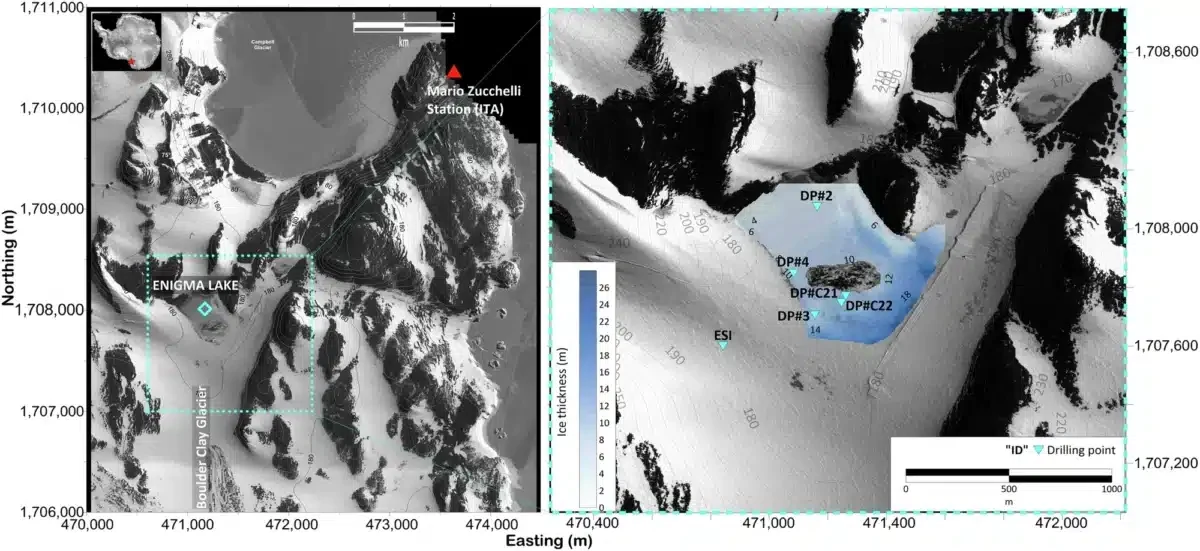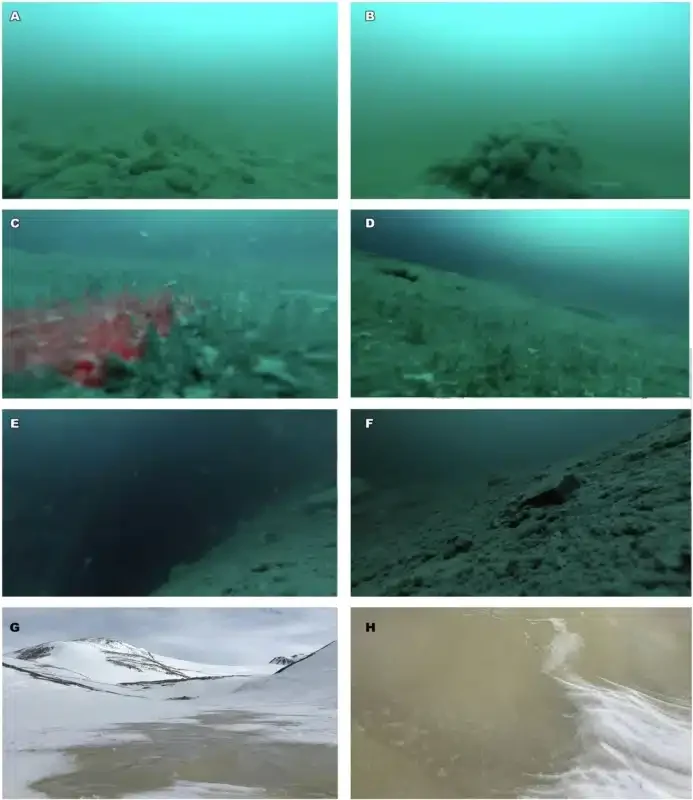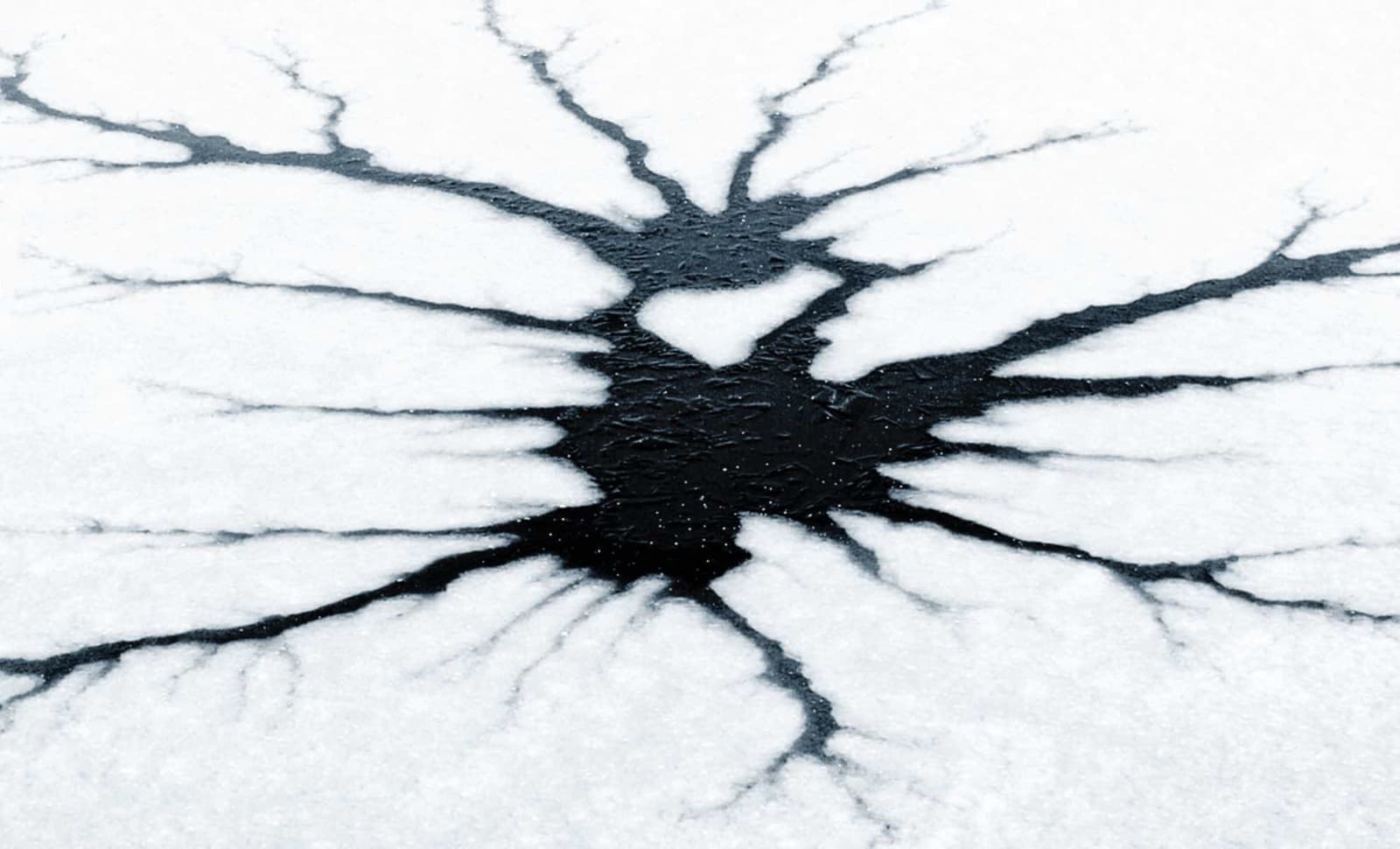Scientists have found living organisms beneath Lake Enigma, an isolated and frozen body of water in Antarctica. For years, researchers believed the lake was frozen solid, with no chance for life to thrive. But in 2019, a team of scientists led by the National Research Council of Italy drilled into the ice and found something incredible:liquid water 11 meters below the surface, teeming with microbial life.
Life Beneath the Ice: A Hidden World
Lake Enigma, hidden in one of Earth’s harshest environments, was long considered lifeless, sealed off by ice for thousands of years. However, when researchers drilled into the ice and extracted water samples in 2019 and 2020, they discovered not only liquid water but a thriving community of microorganisms. The study, published in Communications Earth & Environment, used ground-penetrating radar to locate liquid water beneath thick layers of ice, where they identified a variety of microbes, including Pseudomonadota, Actinobacteriota, Bacteroidota, and Patescibacteria.
“This study describes a unique example of these ecosystems by adding the massive freshwater Lake Enigma, one of the deepest hydrological formations in Victoria Land,” the authors noted.
These microbes, likely isolated for millennia, have adapted to extreme conditions in a frozen ecosystem, offering a glimpse into life that may have persisted before the lake froze over. The discovery suggests these organisms are descendants of ancient life forms, living in isolation like a preserved time capsule.

Time Capsule or Survivors?
The question that looms large is: how did life survive in Lake Enigma for so long? The answer, according to scientists, likely lies in the lake’s history. The researchers suspect that it was once a thriving aquatic ecosystem but eventually became sealed off by a layer of ice. That freezing event may have happened thousands of years ago, trapping microbes in a sort of suspended animation. In such an isolated environment, life forms had no contact with the outside world.
These microbes have likely adapted to the extreme conditions, using unique biochemical processes to survive. It’s an example of how life can thrive even in the harshest places on Earth. And while we’re still piecing together how exactly these microbes endure, their existence provides a glimpse into the surprising resilience of life itself.

A Gateway to Discovering Life Beyond Earth
Antarctica’s extreme environments, particularly places like the McMurdo Dry Valleys, have long been used to study the possibility of life on Mars. The dry, cold conditions in these regions make them perfect analogs for the Red Planet, where conditions are similarly harsh. The microbes found in Lake Enigma now offer a new layer to this research, suggesting that life could survive on planets or moons with environments we thought were uninhabitable.
Consider Europa, one of Jupiter’s moons, where scientists believe there’s a subsurface ocean beneath the icy crust. The existence of microbial life in a lake like Enigma adds to the growing body of evidence that life may exist in places previously thought to be barren. Researchers working on missions like NASA’s Europa Clipper, which will explore the potential for life beneath Europa’s ice, could use the findings in the frozen continent to refine their search. If life can survive for thousands of years in a frozen, isolated lake on Earth, perhaps it’s not so far-fetched to imagine life beneath the frozen surface of an icy moon.
Enjoyed this article? Subscribe to our free newsletter for engaging stories, exclusive content, and the latest news.












